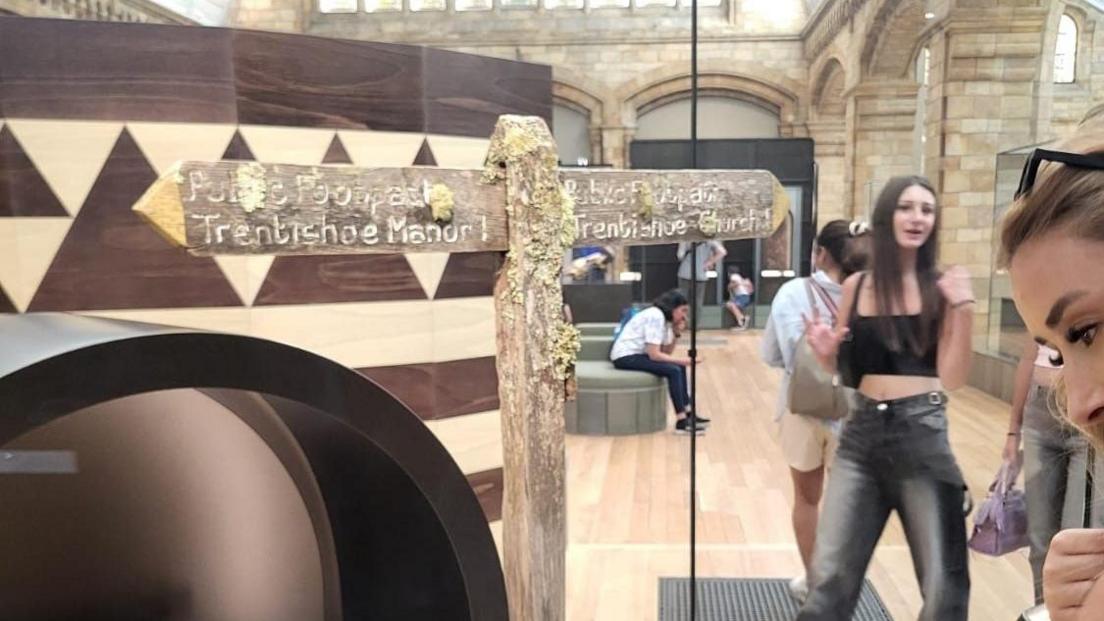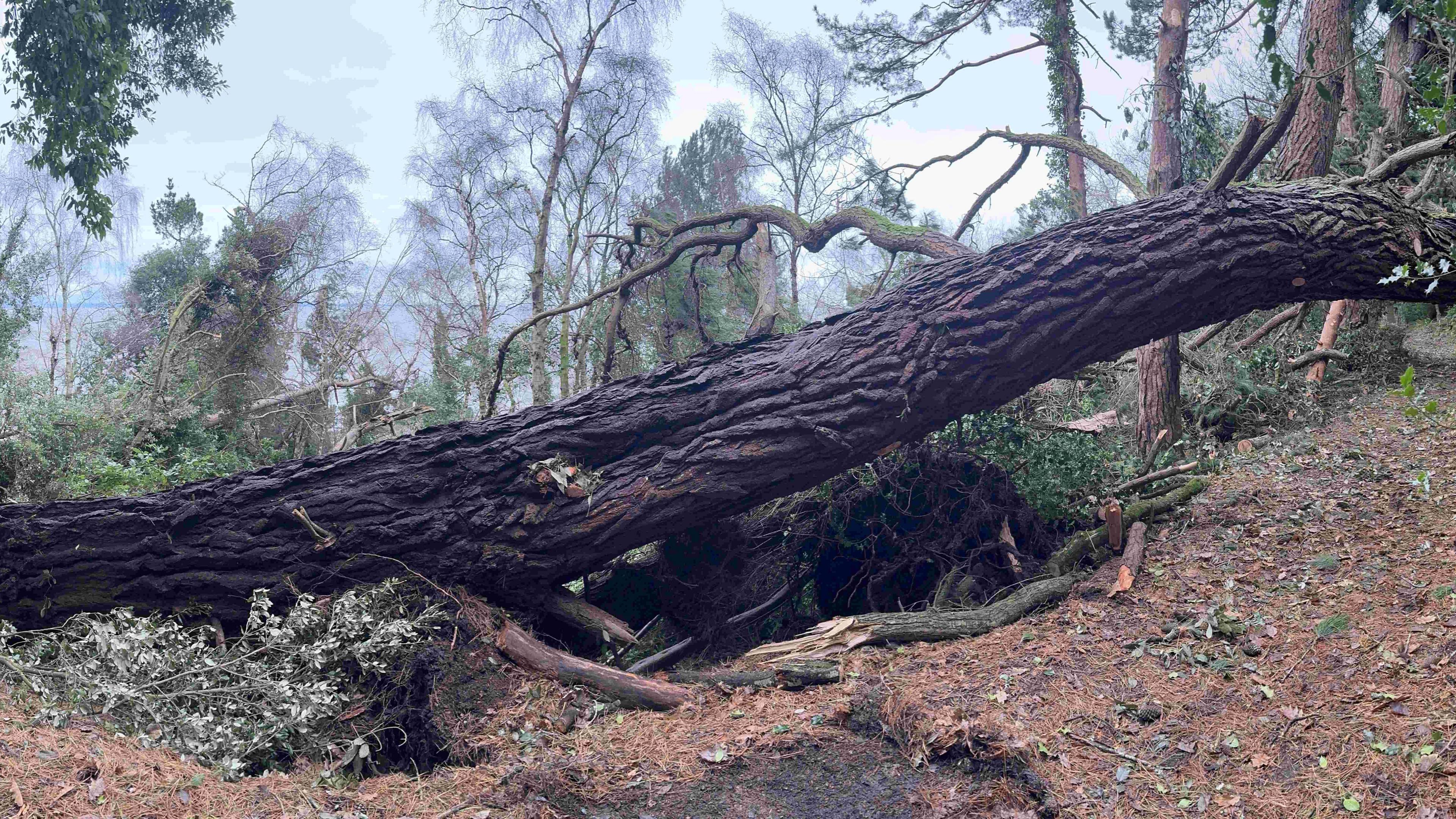Signpost exhibit shows nature thrives in clean air

An old Exmoor National Park fingerpost is on display at an exhibition in the Natural History Museum in London
- Published

Some of the lichens growing on the fingerpost in the museum indicate the high air quality on Exmoor.
An old wooden signpost from a national park is on display in the Natural History Museum, due to having 12 species of lichen living on it.
The fingerpost from Exmoor has been part of the 'Fixing Our Broken Planet' exhibition at the museum since April to act as an example of an item recovered from an area with clean air.
Organisers said the aim was to help educate people and "explore nature-based solutions that can help create a more sustainable world".
Ranger Charlotte Wray, who assisted in the recovery of the post, said it was "such a joy to help tell the story of Exmoor".
'Lack of pollution'
There are currently over 3,000 wooden fingerposts on Exmoor.
The post was originally installed near Trentishoe Common in April 2010, before being collected and transported to the London exhibition.
Ms Wray said: "Some of the lichens growing on this fingerpost indicate the high air quality on Exmoor, which is made possible through the lack of pollution and the presence of these highly functioning woodland ecosystems.
"It's such a joy to help tell the story of Exmoor and we look forward to visiting the museum to see how the skilled conservators have gone about preserving these unique specimens."
The Natural History Museum has been working with the National Park for some time to select the best exhibit.
Follow BBC Devon on X, external, Facebook, external and Instagram, external. Send your story ideas to spotlight@bbc.co.uk, external.
- Published23 March

- Published9 June
